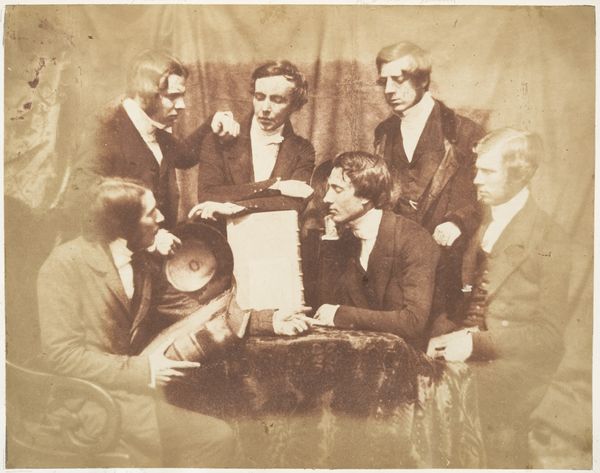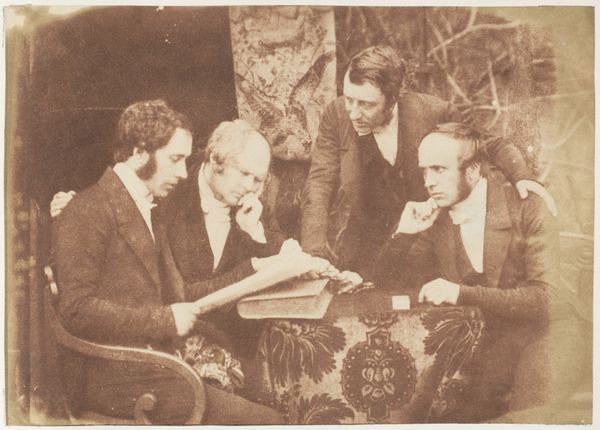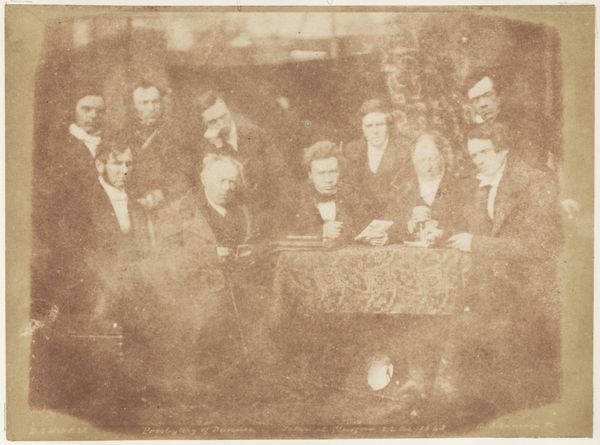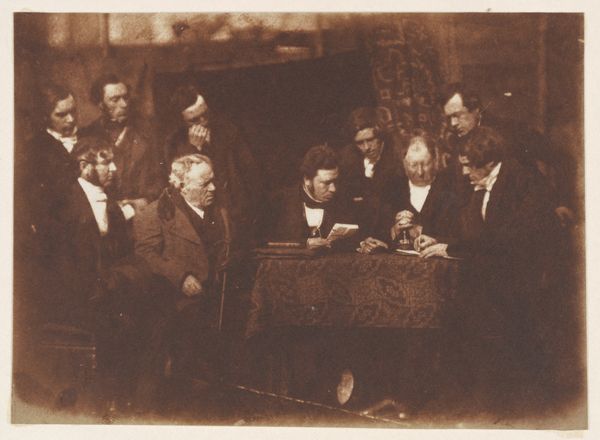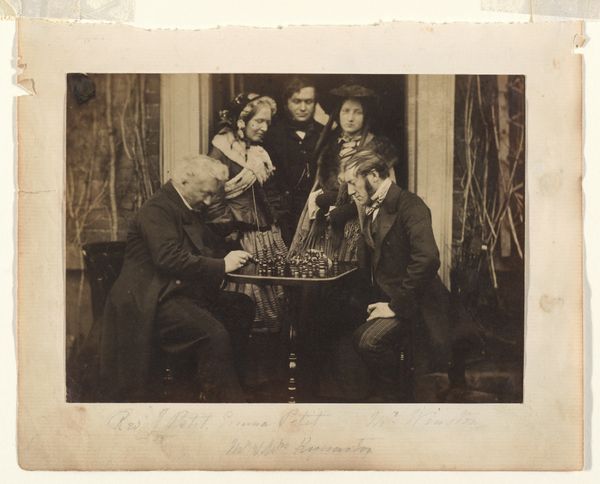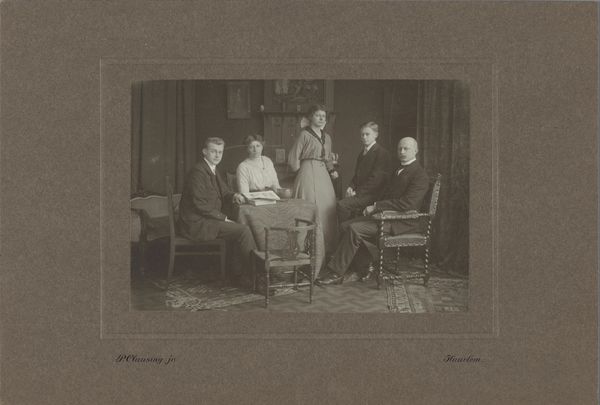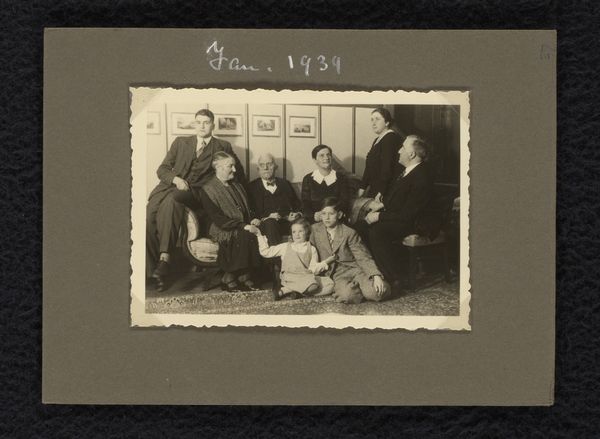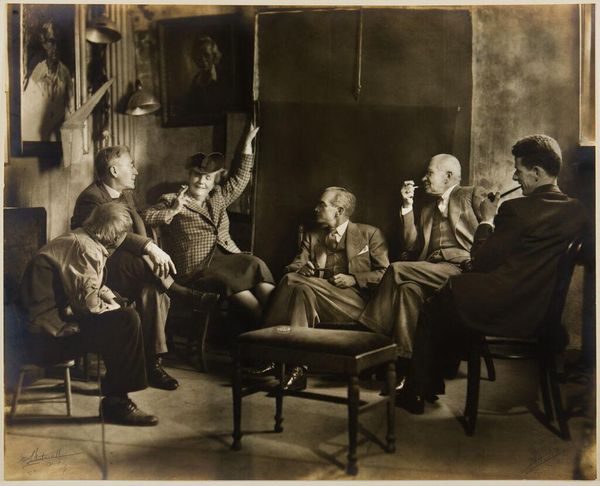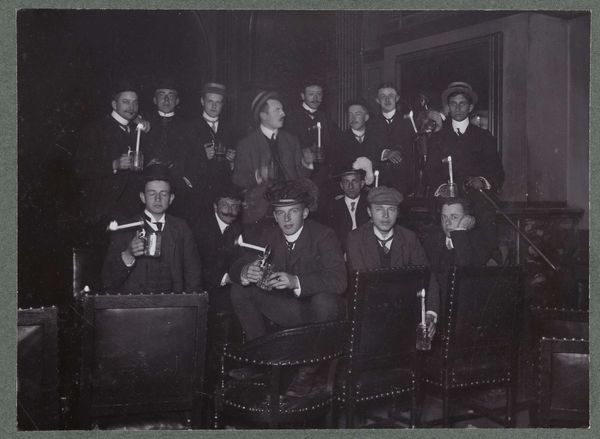
Prof. Fraser, Rev. Welsh, Rev. Hamilton, and Three Other Men 1843 - 1847
0:00
0:00
daguerreotype, photography
#
portrait
#
16_19th-century
#
daguerreotype
#
photography
#
historical photography
#
couple photography
#
group-portraits
#
romanticism
Copyright: Public Domain
Curator: Looking at this 1840s daguerreotype by Hill and Adamson, "Prof. Fraser, Rev. Welsh, Rev. Hamilton, and Three Other Men," I’m struck by its remarkable clarity given the constraints of early photography. Editor: I'm drawn in by the somber mood; it’s as if I'm peering into a solemn, almost secretive gathering. The sepia tones create a strong sense of age, distance and introspection. Curator: It's important to remember the context: this image wasn't just documenting individuals. Hill and Adamson were involved in the Free Church of Scotland movement. These are prominent figures within that socio-religious shift. Editor: I see that in their serious demeanors, but even more so I note how the composition itself is arranged, there is such precise placement and attention to detail, from the clothing to the careful arranging around what appears to be books and texts at the centre of the grouping, suggesting a kind of textual authority or scholastic importance being signaled. Curator: Absolutely. And that textual authority comes down to the technological conditions in this case. Early photography involved a great deal of waiting in fixed poses; It meant a performative display that reinforces their social standing in their religious communities. This image, this material object, helped solidify their authority in a rapidly changing social landscape. Editor: While that’s an important part of it, it’s clear that the soft blurring around the edges is intentional and it really enhances the photo’s somewhat otherworldly aesthetic effect, no? We see this not just as social artifact but really in how the image quality can add to the effect in itself, no? Curator: Perhaps, but to me that softness speaks more of the constraints of early photographic technology and limited means rather than intentional artistry. However, I do agree the resulting tonal shifts create depth of perspective and a clear hierarchy amongst the seated men in front and standing men at the rear. Editor: I suppose our readings reveal how we can view the photograph both as evidence and an artifact—material limitations of production can still affect the aesthetic outcome. Curator: Precisely! This collaboration emphasizes the socio-political forces in artmaking, not only as representation, but as historical and material construction.
Comments
No comments
Be the first to comment and join the conversation on the ultimate creative platform.
